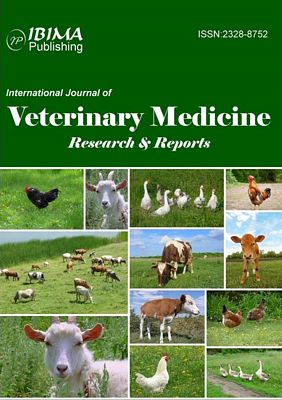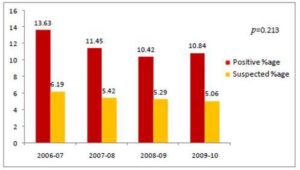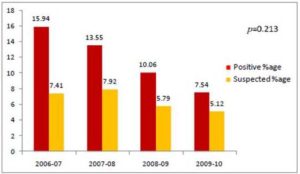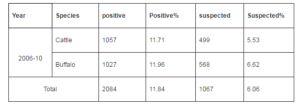Akhter, S., Khan, M. I. & Anjum, A. D. (1992). ‘Comparative Delayed Cutaneous Hypersensitivity in Buffaloes and Cattle; Reaction to Tuberculin Purified Protein Derivatives,’ Buffalo Journal, 8(1) 39-45.
Google Scholar
Bonsu, O. A., Laing, E., Akanmori, B. D, Williams,D. J. L. & wastling, J. M. (2000). “Prevalence of Tuberculosis in Cattle in the Dangme-West District of Ghana, Public Health Implications,” Acta Tropica, 76, 9-14.
Publisher – Google Scholar
Collier, L., Bollows, A. & Susman. (1998). ‘Bacterial Infection, Microbiology and Microbial Infection,’ 9(3) Arnold, London.
Cousins, D. V. (2001). “Mycobacterium Bovis Infection and Control in Domestic Livestock,” Revue Scientifique et Technique, 20, 71-85.
Publisher – Google Scholar – British Library Direct
Daborn, C. (1995). ‘Tuberculosis in Human and Domestic Animals in the Developing World. Tuberculosis in Wild Life and Domestic Animals,’ University of Otaga Press.
Javed, M. T., Irfan, M., Ali, I., Farooqi, F. A., Wasiq, M. & Cagiola, M. (2011). “Risk Factors Identified Associated with Tuberculosis in Cattle at 11 Livestock Experiment Stations of Punjab Pakistan,” Acta Tropica, 117(2) 109-13.
Publisher – Google Scholar
Javed, M. T., Usman, M., Irfan, M. & Cagiola, M. (2006). “A Study on Tuberculosis in Buffaloes: Some Epidemiological Aspects, along with Haematological and Serumprotein Changes”, Veterinary Archives, 76(3) 193 -206.
Publisher – Google Scholar – British Library Direct
Khan, I. A. & Khan, A. (2007). “Prevalence and Risk Factors of Bovine Tuberculosis in Nili-Ravi Buffaloes in the Punjab, Pakistan,” Italian Journal of Animal Scinces, (6) 817-820.
Publisher – Google Scholar
Khan, I. A., Khan, A., Mubarak, A. & Ali, S. (2008). “Factors Affecting Prevalence of Bovine Tuberculosis in Nili Ravi Buffaloes,” Pakistan Veterinary Journal, 28(4) 155-158.
Publisher – Google Scholar
OIE. (2004). ‘Manual of Diagnostic Tests and Vaccines for Terrestrial Animals,’ Office Internationale des Epizooties (OIE), Paris, France.
Google Scholar






